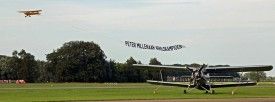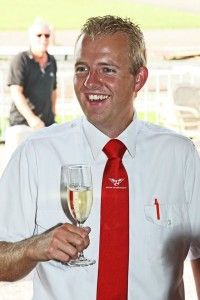As you know the French are not that good in sharing their experiences with others, they happily give their site or FB info , but ,…nearly no news on it.No worries as everybody is allowed to do it her/his/their way.
Today my blog is more Frauke Elbers blog as I got some nice info from her about young Antoine , who on the last day helped his JWGC team to win the comps and by helping , getting himself higher on the total scoring list.
—“Here more about Antoine: his mother was a gliderpilot and so were her father and her three sisters. I was the main babysitter for these girls. It has been a life long over 50 year friendship).
Susanne married a French gliderpilot ( Antoine’s father, who for a while was the main instructor at St. Auban.
Wolf and I had both in 1986 a spectacular flight –on the same day- with him).
Now, in the third generation are Antoine and his older brother Christian, both glider pilots flying out of Vinon. Susanne, the mother, spent a whole year with us here in the US back in the late 70ies.
She flew our Ka8 and made history by flying her Silver Distance never getting higher than 2000ft. Charlotte, Antoine’s sister has no interest in soaring. She spent a whole summer with us 10 years ago and we could not get her into a sailplane. Pretty unusual, a friendship that spans 3 generations of gliderpilots and which so far has lasted over 50 years.–“
AND, here is Fraukes story about the French Junior Training;
—” The making of a young pilot.
A deciding criterion in recruiting young people to soaring is the so called BIA (brevet d’intitiation aeronautique) or “a short introduction to aeronautics”. This year long theoretical course is being held in a local high school taught by senior instructors of the Vinon soaring club on a Wednesday afternoon, when French schools traditionally don’t have classes.
This course teaches the basics of flying and ends with an exam. The students who pass this exam are then invited to fly for three days. ( Initially Antoine had signed up for this course without telling his parents. He passed his exam and that how he got to his first soaring flights). Most of the young people who were introduced this way to soaring began their training in earnest. And by now probably all have flown their 300 km, which out of the Vinon airfield is easier than at many other glider ports.
A second important aspect of a well structured concept is the so called “livre blue” (blue book) which contains the training syllabus and serves as guidance for the instructors. It was compiled by soaring professionals over many years. Many believe that this solid concept provides the impulses and offers an intelligent way to teach cross-country flying.
A third important point is that most of the big, French clubs have paid personnel. The Vinon staff consists of the chief pilot and his deputy. Depend on the season more instructors will be hired. In addition to these the staff consists of a secretary (or more), at least one mechanic and janitorial staff. Add to this all the volunteers.
Point four is the money issue. French clubs receive money from different sources. In order to access the money somebody has to search for the sources and do all the paper work. Antoine’s support came from different sources for his “outstanding performance”: the State (Departement in France), the regional government, the Olympic Committee and the French Soaring Federation. The money is credited to the club, which in turn will credit it to the individual pilot’s account.
For the first two years in the club the young pilots can fly the club’s airplane for a reduced rate. For a fixed rate of EUR 800 and for as many hours they like they can fly LS4, Pegase, Astir and DG300. In addition to this are the costs for a tow, which range between EUR 30 and EUR 40. Since Antoine started to fly he received subsidies of about EUR 4500 to EUR 5000. His parents chipped in about the same amount. Without this financial support many parents could not have afforded the flight training for their children and even with this support many of the Vinon youngsters come from medium to high income families. But performance will bring money. And the money spend by the parents is considered an investment in their children’s future. Many later find their way into military and civilian aviation.
From next year on Antoine will have to pay the full costs for the use of the club’s equipment since his two year support comes to an end. To afford his continued flying in the club he will get his instructor rating and instruct for pay. He also will partake in the government sponsored, high performance camp at the FrenchNationalSoaringCenter in St. Auban.
A fifth point is that the big, well-known clubs in France who accommodate many pilots and national teams from other European countries make a lot of money this way and therefore can invest in modern, high performance sailplanes and can afford paid staff.
A lot of motivation for these young pilots comes from watching the high performance pilots train and fly.
Antoine credits his early interest in flying to building models and his father (a former glider pilot and now airline pilot. -His mother also was a glider pilot-) who instilled in him a sense of safety behaviour, attention to the details and the ability to concentrate. He also believes into listening to the older, experienced pilots and considers an exchange with them important. Another important factor that attracts the young people is that the chief instructor in Vinon believes in awarding flying skills and pilot performance to move the pilots to higher performance sailplanes instead of an inflexible training schedule where the trainees have to go through fixed training levels and number of hours before being allowed to move on to the next level of high performance sailplanes.
In 2008 Antoine then 16 years old was the #1 French pilot in the under 25 group of young pilots.—”
A BIG thank you to Frauke who just travelled back from France where she attended the WWGC and as she said was “mighty proud” on Sarah.
Now we are talking JWGC…. do you know, how they congratulate a young Dutch pilot becoming junior world champion??? Here you are:
with a banner with;
PETER MILLENAAR WORLD CHAMPION
courtesy Frans Guise
AND
Also by Frans
A HAPPY CHAPPIE!
CU you next Sunday. For all other news you can go on Wednesday to www.soaring.eu A more personal story with pictures, from my visit to Keiheuvel is on last Sundays news as well.
cheers Ritz









1 comment for “Finally some “secrets ” about French soaring! Dutch JWGC winner looks happy!”